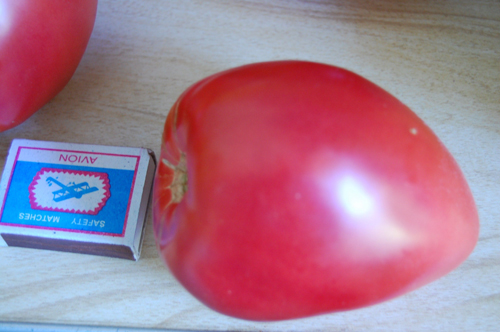Tomato variety Eagle's beak
Pink-fruited tomatoes are in constant demand, they are beautiful in appearance, fleshy and tasty. Of course, there are many varieties, but in order to choose the most interesting one, you need to learn as much information as possible about each. Let's try to systematize information about the Eagle's Beak tomato. It was bred by the Novosibirsk breeder V.N. Dederko. The application for registration was filed in 2003, the variety was entered into the State Register of Plants of the Russian Federation in 2005 with admission to cultivation in all regions of Russia. Recommended for open field cultivation in garden plots, household and small farms. Shows good results in protected ground. Not a hybrid.

Description
The plant is tall, with a rapid rate of development, of an indeterminate type. The height of a tomato in the open field is up to 1.5 meters, more than 2 can grow in a greenhouse, so growth must be limited. The branching ability of the variety is moderate, foliage is weak. The stem of the Eagle's beak is not very powerful, the internodes are long. Leaves are of the usual type, petiolate, large, the surface is slightly corrugated, green, the reverse side of the plate is slightly lighter. The stem and shoots are covered with pubescence. Yellow flowers are collected in a simple inflorescence. The first fruit cluster is formed quite early, after 10 leaves (according to some reports, after the 9th). Subsequent ones appear after 3 sheets. In Siberian climates, the plant ties 3-4 brushes. Each contains on average about 4 ovaries. The peduncle is articulated.

Ripening tomato fruits are simply pleasing to the eye. They have a somewhat elongated heart-shaped shape, the ribbing is weak, the consistency is dense. The variety got its name thanks to the top, which is slightly curved in most fruits, which really resembles an eagle's beak. Unripe tomato is green, there is a dark spot near the stalk. As it matures, the color changes to pink, the stain disappears. The pulp is fleshy, elastic, sugar-rich in the cut, juicy, but not watery, low-seeded. The taste is sweet, although a slight sourness is felt. The taste is assessed as good. The mass of fruits, according to the State Register of Plants of the Russian Federation, is 228 - 360 grams, the largest specimens reach a weight of 600 grams. On the packaging of seeds from the "Siberian Garden" the weight is declared to be up to 800 grams. According to the observations of gardeners, the largest tomatoes ripen on the clusters located at the bottom, and on the upper ones, the average fruit weight is about 200 grams.
Variety characteristics
- The eagle's beak belongs to the mid-season varieties, from the moment of the emergence of friendly shoots to the beginning of ripening, 105 - 115 days pass;
- the yield of marketable fruits indicated by the State Register is 10.5 - 14.4 kg per 1 square meter. According to information from the "Siberian Garden", up to 6 - 8 kg of tomatoes can be removed from one bush;
- the yield of ripe fruits is 75%;
- the plant adapts well to open ground conditions, tolerates cold snaps and too hot periods;
- the fruiting of the Eagle's beak is stretched and stops with the onset of cold weather, almost the entire set of harvest has time to ripen on the bush. But if you have to remove blanche tomatoes, then, according to reviews, they are perfectly ripened;
- some gardeners complain about the presence of green "shoulders" in the fruit;
- according to reviews of those who grew this variety, the plant's immunity is quite good;
- transportability of fruits is excellent, keeping quality too;
- the way of eating tomatoes, first of all, salad. But tomatoes are quite suitable for processing into juices and sauces.
Agrotechnics
It is recommended to grow the Eagle's beak in a seedling way.Sowing seeds is carried out 60 - 65 days before the intended transplantation to a permanent place. It is best to calculate the timing in each region independently, taking into account the climatic features. Under the conditions of Nizhny Novgorod, when sowing seeds on March 12, on the bushes planted in a greenhouse, tomatoes begin to ripen in the first week of July. The recommended planting density is 4 pieces per 1 square meter. A plant is formed into 1 or 2 stems, a garter on a trellis and pinching are required. It is also recommended to tie up the pouring brushes, as they may break. Further care consists of the same techniques that are applied to the culture as a whole - timely watering and feeding, loosening and weeding, disease prevention and protection from pests.
Eagle's beak, according to gardeners' reviews, is the favorite variety of most of them. Many have been growing this variety for more than one year, since it is very easy to do this, and the yield and taste are pleasing. And collecting seeds on your own will not be difficult. The disadvantages that are observed mainly in the greenhouse are very rarely indicated - this is the occurrence of apical rot and cracking of tomatoes near the stalk.








